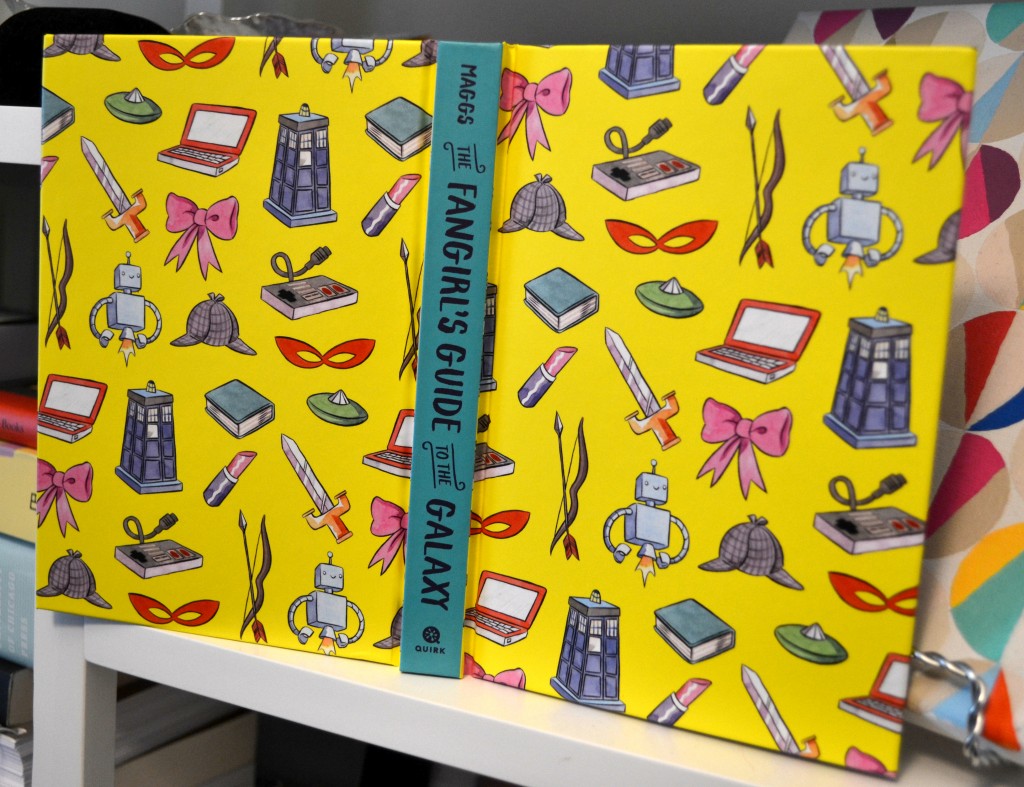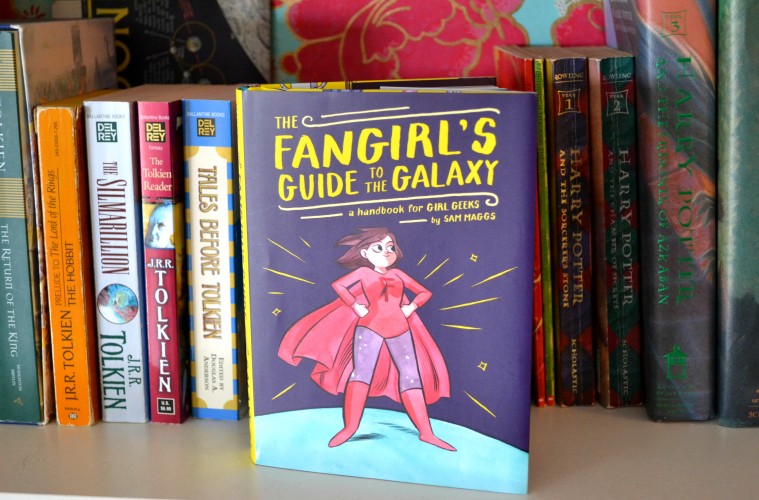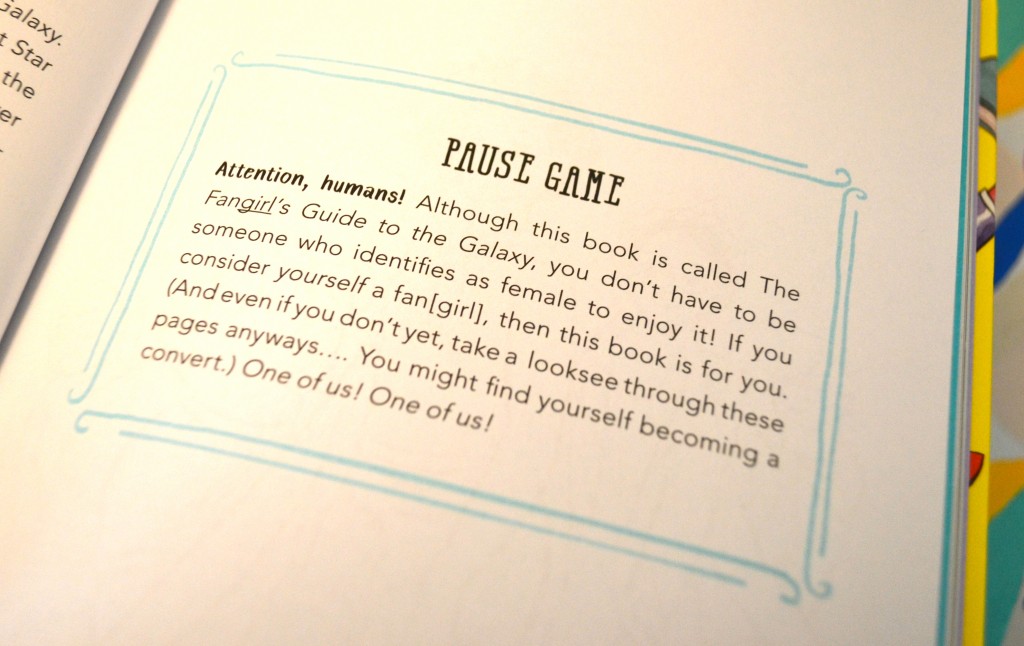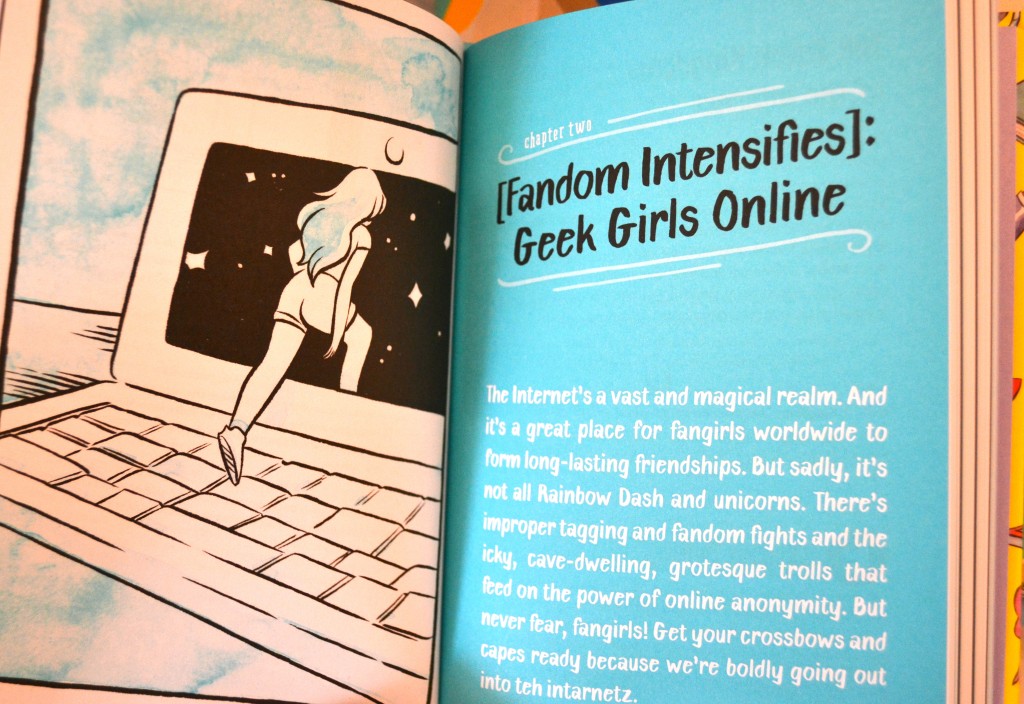One of the great things about contributing to Minerva is the range of subjects you get to write about. All geeky topics are fair game. Because I am a total book nerd who writes book reviews in her spare time, I figured what’s better than writing a review for a book that encompasses all things geek, with fangirls specifically in mind?
Thanks to lovely people at Quirk Books, I was lucky enough to receive a finished copy of Sam Maggs’ The Fangirl’s Guide to the Galaxy in exchange for an honest review, and, let me tell you, it’s a delight for the eyes and mind.
Premise:
Sam Maggs’ The Fangirl’s Guide to the Galaxy is exactly what it sounds like: a handbook for girl geeks. It’s touted as “a fun and feminist take on the often male-dominated world of geekdom”—and it totally delivers. It breaks down fanfic, cosplay, cons, books, memes, news and community resources, and so much more. It’s honestly amazing how much information is crammed into a 200 page, 5” x 7” book. Because there’s so much info within this book, I’m only touching on the aspects that really stood out to me.
First Impressions:
Wow. Design-wise, this book is absolutely beautiful. Its highly stylized interior uses fun fonts and gorgeous illustrations. The interior color scheme is on point in black and white with turquoise and lavender accents. The hardcover boasts bright and quirky cover art that includes nods to famous fandoms like Doctor Who and Sherlock, while strategically placing pink bows and lipstick throughout the pattern. The back-cover copy on the dust-jacket, “The Geek Girl’s Litany for Feminism,” is downright inspirational, both in design and message:
“I’m the Doctor, not a companion; Buffy, not Bella; nobody’s sidekick, love interest, or token female. I’m driving this ship. I’m a fangirl, a feminist, and a force to be reckoned with.”
Right on. I swear on all that is geeky that I got chills down my spine as I read that.
Pros:
Something this book does so very right is use positive and inclusive language, instilling and encouraging fangirl pride in all of its readers. Maggs constantly reminds her readers not to feel shame in shipping, writing fanfic, cosplaying, and just being your passionate and expressive self. She also goes to great lengths in each section to remind everyone to respect each other; she even devotes an entire page to Wheaton’s Law: “Don’t be a Dick.”
For example, when talking about Stans (the playful portmanteau of “stalker” and “fan”), Maggs sagely advises “Just remember: a good stan is a respectful stan. Everyone can love what they love.” Excellent advice for the overzealous but well-meaning fangirls of the world.
If friends don’t understand or accept your fangirlish ways, Maggs reminds you not to get discouraged or defensive: “Getting invested in a fictional world means you have a wonderful imagination, a big heart, and the capacity for endless creativity. No one can say anything bad about that.” Sometimes we all need to hear a little pep talk like that.
My favorite section of the book is the one that describes different types of online trolls and how to defeat them. For example, report and block harassment, take screenshots of usernames and timestamps, and respond publicly to the troll: “Think of it as taking that twisted stream of vitriol and turning it into a rainbow that would flow freely from a unicorn.” Since Minerva is no stranger to trolls, I loved the practical, wise, and humorous advice Maggs provides, and I think her way of framing “counterattacks” in terms of what badass female characters (like YoSafBridge from Firefly and Lois Lane) would do is nothing short of brilliant.
Cons:
While reading, I sometimes got confused about who Maggs is writing for. She gives advice on how and where to make fellow fangirl friends and explains why posting pictures of yourself in lingerie on Instagram is a bad idea, leading me to believe she’s writing for a younger audience looking for social guidance. Then she talks about getting geeky tattoos and going to pub trivia nights and burlesque shows. This is obviously geared toward an older reader.
At another point in the book, while talking about fanfic (what it is and how to write it), Maggs suggests ways to loosen up in order to feel comfortable writing sex scenes: “it if helps, lock your door, put on your sexiest steampunk corset, get a little tipsy—whatever works.” Again, this seems geared toward an older audience, but do older audiences really need this type of advice?
I’m sure this disconnect is the result of Maggs wanting to reach as wide an audience as possible, which, on one hand, I can appreciate because I am a comparatively older fangirl. On the other hand, I think this book should have focused on one age group or the other to feel more cohesive and relatable. There were times when I felt like she stopped talking to me and started talking to someone else much younger, which is a bit disconcerting.
Verdict:
This is a particularly great read for young girls new to geekdom. I’d highly recommend it to girls in middle school through high school, who are just starting to enter the fangirl world and need some direction and encouragement. There are a lot of definitions and breakdowns for nerdy novices of any age, and I definitely learned a lot. I was also fascinated by the numerous interviews with high-profile and successful fangirls like Jill Pantozzi of The Mary Sue and Kate Beaton. The book has some really funny moments, while also reiterating how important it is to be confident in yourself and respectful of others. I give it a solid 4/5 Stars.




